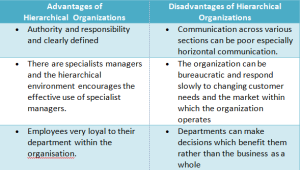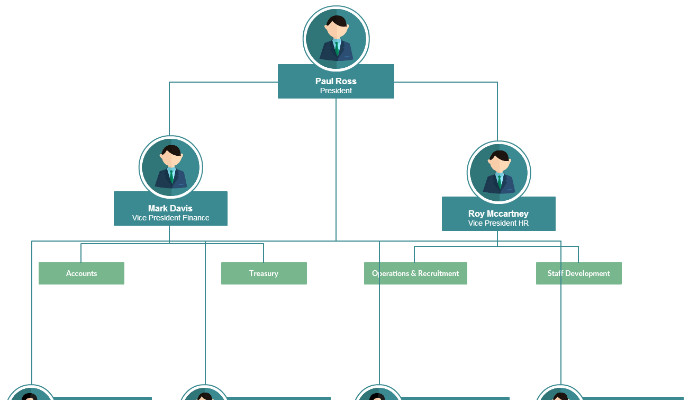The Best Strategy To Use For Relational Leadership Essentials
The Best Strategy To Use For Relational Leadership Essentials
Blog Article
The Ultimate Guide To Relational Leadership Essentials
Table of ContentsRelational Leadership Essentials - TruthsSome Known Details About Relational Leadership Essentials Fascination About Relational Leadership EssentialsRelational Leadership Essentials Fundamentals ExplainedThe Greatest Guide To Relational Leadership EssentialsWhat Does Relational Leadership Essentials Mean?Relational Leadership Essentials - An OverviewSome Of Relational Leadership Essentials
There may be multiple lines of coverage, which may change depending upon work obligations. Simply put, instead than people reporting to one manager, they might report to others as component of their routine task duties or for various jobs. In a matrix org structure, a functional supervisor will oversee all elements of a task and is the primary decision-maker.In a matrix org framework, the job supervisor or lead has more authority. The functional manager is still the supreme authority. In a matrix org structure, the task supervisor is approved equal (or even more) power than the functional supervisor. The task supervisors have control over sources and job projects. Benefits of a matrix org framework consist of: Raised communication performance Enhanced worker inspiration due to added autonomy Increased team effort and collaboration from cross-functional location communications Maximization of resources and sharing Enhanced worker development Negative aspects of a matrix org structure include: Potential conflicts between managers and projects because of conflicting purposes Confusion over who has authority to choose Decreased employee efficiency when employees are appointed to several jobs Raise management overhead expenses as a result of multiple administration layers For even more on matrix structures, please read this short article.
Some Of Relational Leadership Essentials
This structure teams workers into practical areas based upon their know-how. These useful areas often represent phases in the value chain such as operations, r & d, and marketing and sales. They also include support areas such as bookkeeping, money, and human resources. The visuals that adheres to reveals a functional framework, with the lines indicating coverage and authority partnerships.
Product departments work well where items are extra technical and call for more customized expertise. These item divisions are sustained by centralized solutions, which consist of: public relationships, service advancement, legal, global research study, human sources, and financing. This sort of structure is ideal for companies with numerous items and can aid shorten item advancement cycles.
An additional drawback is that the company might end up with duplicate resources as different divisions pursue autonomy. Business that use services, such as healthcare, often tend to utilize a customer-based framework. While similar to the product framework, the various business sections near the bottom are each split right into a details consumer team as an example, outpatient, urgent treatment, and emergency situation care individuals.
Excitement About Relational Leadership Essentials
Employees can specialize around the type of client and be more effective with that said kind of client. The supervisors of each consumer center would report directly to the primary medical officer and/or the medical facility CEO. This is also created to stay clear of overlap, confusion, and redundancies. The client framework is proper when the organization's services or product needs to be tailored to specific consumers.
The customer-based framework is perfect for an organization that has services or products special to details market sections, especially if that organization has actually progressed expertise of those sectors (leadership resources). However, there are negative aspects to this framework, as well. If there is way too much freedom throughout the divisions, incompatible systems may establish. Or divisions may wind up unintentionally duplicating tasks that various other departments are already managing.
Fascination About Relational Leadership Essentials

Its primary downside: intricacy, which can cause confused workers. The truth is that if a company achieves success enough to make it through and grow, it will eventually need some type of combination. Poor interaction between siloed departments typically causes a crisis that inspires initiatives to integrateefforts such as groups, networks, and modular structures.
The most recent, and the majority of divergent, team framework is typically known as a network structure. A network framework has little administration and attributes decentralized decision making.
Relational Leadership Essentials for Beginners

The complying with video clip explores Zappos' work society and organizational structure. A service that has areas or departments that can be conveniently divided from the business without jeopardizing the business are taken into consideration to have find more info a modular business structure.
Getting The Relational Leadership Essentials To Work
This short quiz does count towards your grade in the class, and you can retake it a limitless variety of times. Utilize this quiz to examine your understanding and decide whether to (1) research the previous area even more or (2) relocate on to the next section.

However, motivating individuals in a team-based company can be much more tough as team success are compensated as opposed to private achievements. The most recent, and the majority of divergent, group structure is typically known as a network framework. A network structure has little administration and functions decentralized decision making. Managers coordinate and control relations both internal and outside to the company.
The Of Relational Leadership Essentials
Order is supposed to emerge from the base up, instead than depend on top-down command and control as in conventional business structures. Once the groups are in place, the CEO effectively gives up all executive powers.
However, the circular framework can be complicated, particularly for brand-new staff members. The complying with video clip discovers Zappos' job culture and organizational framework. A service that has areas or divisions that can be conveniently separated from the business without endangering the firm are considered to have a modular organizational framework. The crucial lies in the capacity to determine which modules, or divisions, of a business are effective and which can be contracted out to produce a tighter company.
Excitement About Relational Leadership Essentials
This short test does count toward your quality in the course, and you can retake it an endless variety of times. Use this quiz to examine your understanding and make a decision whether to (1) study the previous section better or (2) proceed to the following section.
A matrix organizational structure is one in which staff members report to several bosses rather than just one. It differs from the traditional business framework where the pecking order moves from the top down. This framework produces a system where staff members have several superiors along both features and job lines.
Report this page